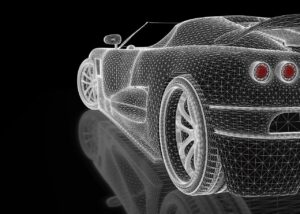Ever wondered how electric vehicles (EVs) do their thing? It’s actually quite fascinating! Electric vehicles (EVs) operate on the principle of converting electrical energy stored in batteries into mechanical energy to drive the vehicle.
Here’s the lowdown on how they work:
Battery Pack
Think of the battery pack in an EV as its energy reservoir. It’s like a super-sized version of the battery in your remote control, but it’s often loaded with high-tech lithium-ion batteries instead of AA batteries. These batteries store electrical energy in a really cool way – through chemical reactions. So, it’s like having a power bank for your car, always ready to deliver that electric punch.
Electric Motor
Now, this is where the magic happens.
When you step on the pedal, the battery kicks into action. It sends electrical energy to the electric motor, which is like the car’s engine, but without the noise and emissions. The electric motor is a wizard of sorts; it transforms that electrical energy into mechanical power. This mechanical power is what makes the wheels turn and propels the car forward.
There are different types of electric motors, just like there are different types of engines for gas-powered cars. They each have their own unique ways of turning electrons into motion.
Power Electronics
To make sure everything runs smoothly, there’s a piece of tech called power electronics. These are like the conductors of an orchestra, directing the flow of electricity from the battery to the electric motor.
hey have this nifty trick up their sleeves – they change the battery’s direct current (DC) power into alternating current (AC) power, which is what the motor needs to do its job effectively. So, it’s a bit like converting the energy from one form to another, all in the blink of an eye.
Transmission
Unlike traditional cars with a bunch of gears, many EVs keep it simple with a single-speed transmission. Why? Because electric motors are incredibly versatile. They can deliver a wide range of power and speed without the need for lots of gears. But, if you’re in a high-performance EV, you might find a multi-speed transmission to give you that extra kick when you need it.
Charging System
So, what about refueling? That’s where the charging system comes in. Just like your smartphone, an EV needs to be charged up. You can plug it into a regular wall outlet at home or find a fast-charging station if you’re on the go. The onboard charger in the car manages the electricity flow, ensuring the battery gets juiced up and ready for your next adventure.
Here’s how an electric vehicle works in more detail:

- Charging: The EV is connected to an external power source, such as a charging station or a home charger. The battery pack is charged using electrical energy from the grid. Depending on the vehicle and charger compatibility, this can be done through standard household outlets or fast-charging stations.
- Energy Storage: The battery pack stores the electrical energy in a chemical form. Each battery cell contains positive and negative electrodes separated by an electrolyte. Lithium ions move from the positive electrode to the negative electrode when the battery is charged, storing energy.
- Electric Motor Operation: When the driver accelerates or presses the throttle pedal, the power electronics control the flow of electricity from the battery to the electric motor. The motor then uses electromagnetic fields to generate rotational force transmitted to the wheels.
- Regenerative Braking: Many EVs use regenerative braking systems, which capture energy during braking and deceleration. When the driver lifts off the accelerator or applies the brakes, the electric motor can act as a generator, converting some of the kinetic energy back into electrical energy to recharge the battery.
- Vehicle Propulsion: The mechanical energy generated by the electric motor is transmitted to the wheels, propelling the vehicle forward. The driver controls the amount of power delivered to the motor through the accelerator pedal.
- Range and Efficiency: The range of an EV depends on factors such as the capacity of the battery pack, driving conditions, and driving habits. EVs are generally more energy-efficient than internal combustion engine vehicles, which can lead to lower operating costs and reduced emissions.